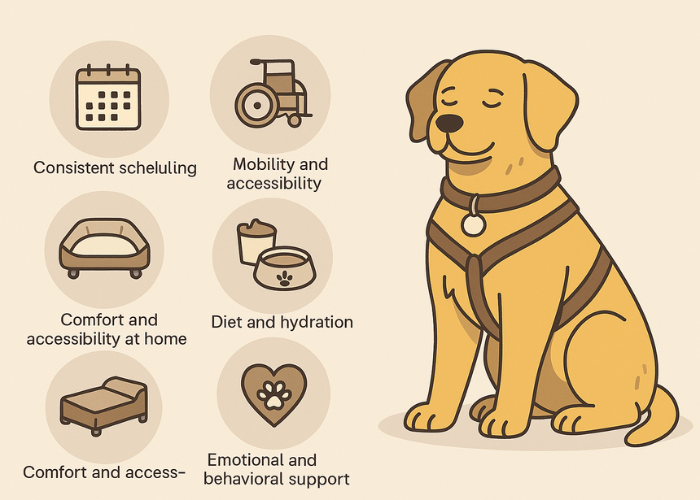If you’ve ever found your shoes mysteriously chewed up or your dog barking endlessly at the doorbell, you’re not alone. The good news? There’s a gentle, effective way to change these behaviors — and it doesn’t involve yelling or punishment. Welcome to the world of Positive Dog Training.
This article will walk you through how to train your dog using encouragement, not fear. Whether you’re dealing with a puppy or an older dog set in their ways, you’ll discover practical steps that really work. And more importantly, you’ll build a deeper bond with your furry friend.
Curious to know how simple rewards can lead to major breakthroughs in your dog’s behavior? Keep reading — your journey to a better-behaved pup starts now.
🐶 What Is Positive Dog Training?
Positive Dog Training is a method that focuses on rewarding good behavior rather than punishing the bad. That means using treats, toys, praise, or even belly rubs as motivation.
Instead of saying “no” all the time, this approach teaches your dog what you want them to do, making training more enjoyable for both of you.
Why it works:
- Dogs respond better to rewards than punishment
- It strengthens trust between you and your dog
- It makes training sessions feel like playtime
🐾 Common Behavioral Problems in Dogs
Every dog has their quirks, but here are some common issues that Positive Dog Training can help solve:
- Excessive barking – caused by boredom, fear, or excitement
- Chewing furniture or shoes – often a sign of stress or lack of stimulation
- Jumping on people – usually out of excitement
- Pulling on the leash – poor walking habits
- Separation anxiety – fear of being left alone
🎯 Key Techniques and How to Use Them
Positive training is all about reinforcing behaviors you like. Here’s how:
- Timing is everything: Reward your dog immediately after the desired behavior.
- Keep rewards consistent: Start with treats, then mix in praise or play.
- Use clear cues: Short commands like “sit,” “stay,” or “leave it.”
- Be patient: Repetition is key. Don’t expect miracles overnight.
- Ignore bad behavior: Don’t give attention to unwanted actions.
By repeating these steps, your dog will begin to associate good behavior with something great — and will naturally want to repeat it.
🧰 Top Tools for Positive Dog Training
Here are a few tools that trainers (and dogs!) love:
- Clickers: Make a clicking sound right after your dog does the right thing — then treat.
- Treat pouches: Keep rewards handy for quick timing.
- Training mats: Give your dog a “go-to” space.
- Puzzle toys: Keep them mentally engaged between training sessions.
- Leashes with harnesses: Offer control without discomfort.
These tools are widely used by professional trainers and highly rated by dog owners across the U.S.
📝 Step-by-Step Routine to Train Your Dog
- Pick one behavior to work on per session
- Give a simple command (like “sit”)
- Wait for the correct response
- Click (or say “yes”) and give a treat
- Repeat 5–10 times in a session
- Keep sessions short (5–10 minutes)
- End with praise and play
👉 Consistency is key — make training a fun daily habit!
📊 Did You Know?
- Dogs trained with positive reinforcement learn commands up to 50% faster
- Over 70% of professional dog trainers in the U.S. use some form of positive training
- Reward-based training can reduce anxiety behaviors by up to 60%
- Positive training encourages better long-term behavior retention
✅ Tips to Avoid Common Mistakes
- Don’t overuse treats — gradually phase them out as behaviors stick
- Avoid shouting or scolding — it confuses your dog and builds fear
- Be consistent — use the same cues and routines daily
- Keep your cool — dogs pick up on your frustration
- Celebrate small wins — every step forward counts!
🐕 Final Thoughts
With Positive Dog Training, you’re not just teaching tricks — you’re building trust. Every command learned, every tail wag earned, makes your bond stronger.
Training doesn’t have to be stressful or rigid. With a little patience and the right approach, your dog can learn to behave — and enjoy doing it.
👉 Ready to try it out? Start today with one simple command. Your dog is already listening — now it’s your turn to guide them.
🔍 Table 3: Semantic Fields and LSI Terms for “Positive Dog Training”
| Semantic Field | LSI / Related Terms |
|---|---|
| Training Techniques | reinforcement, clicker training, reward system |
| Dog Behavior | obedience, habits, commands, correction |
| Pet Psychology | motivation, trust, consistency, anxiety |
| Tools and Accessories | leash, harness, clicker, treats, toys |
| Dog Breeds & Ages | puppy training, senior dog training |
| Emotions and Connection | bonding, communication, affection, playtime |
| Daily Routine | routine, repetition, timing |
| Problem Solving | barking, jumping, chewing, aggression |
| Trainer’s Role | guide, leadership, instruction |
| Positive Reinforcement | praise, treat, affection, reward |
| Animal Welfare | humane training, no punishment, respect |
| Learning Process | repetition, habit-forming, behavior change |
| Dog’s Perspective | understanding, needs, motivation |
| Social Proof | testimonials, ratings, vet-approved |
| Safety | safe training, gentle methods, stress-free |
| Success Stories | before and after, progress, achievement |
| Practicality | easy-to-use, beginner-friendly, affordable |
| Engagement | interactive, fun, stimulating |
| Consistency | daily practice, structured training |
| Communication | voice commands, gestures, body language |



